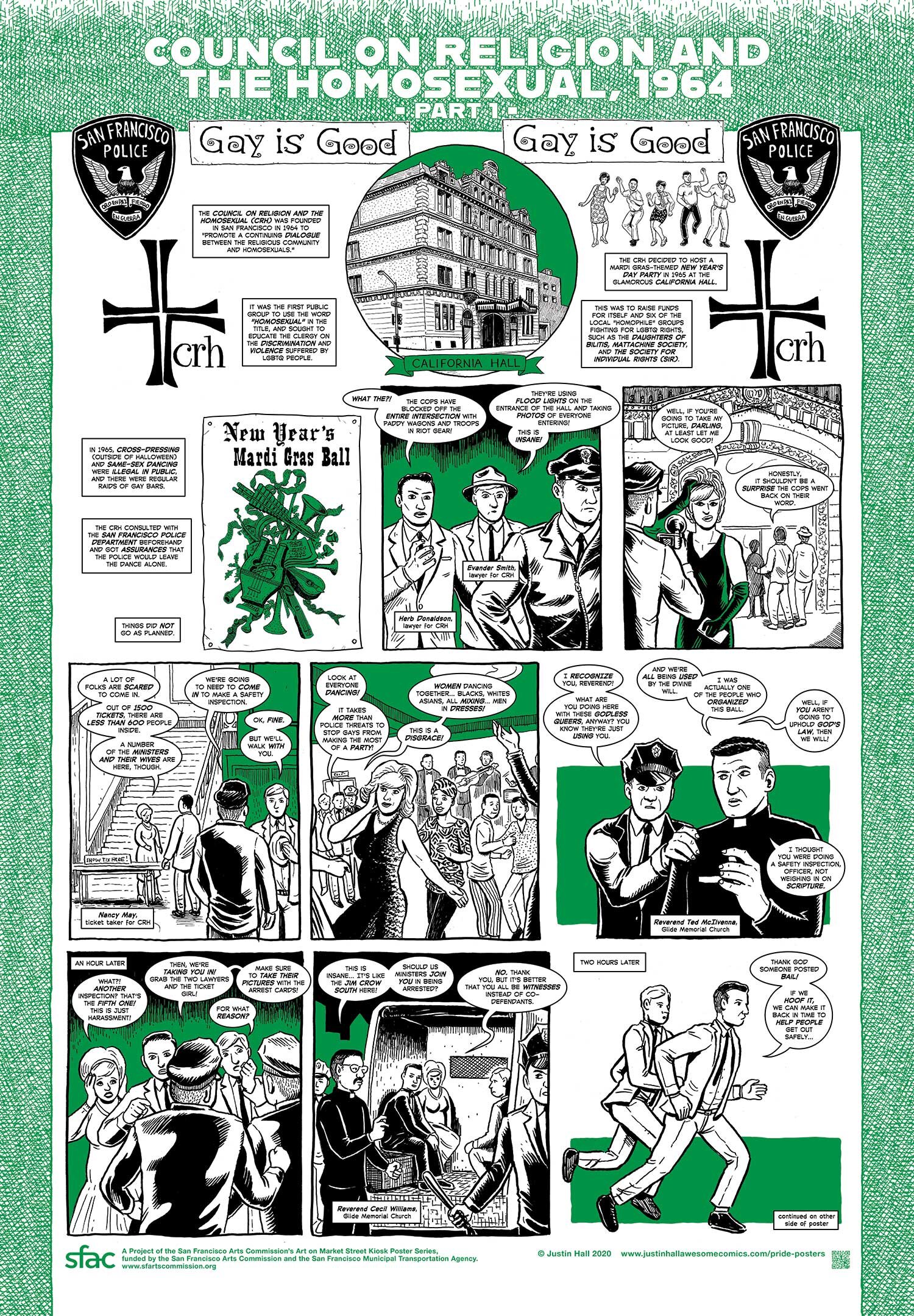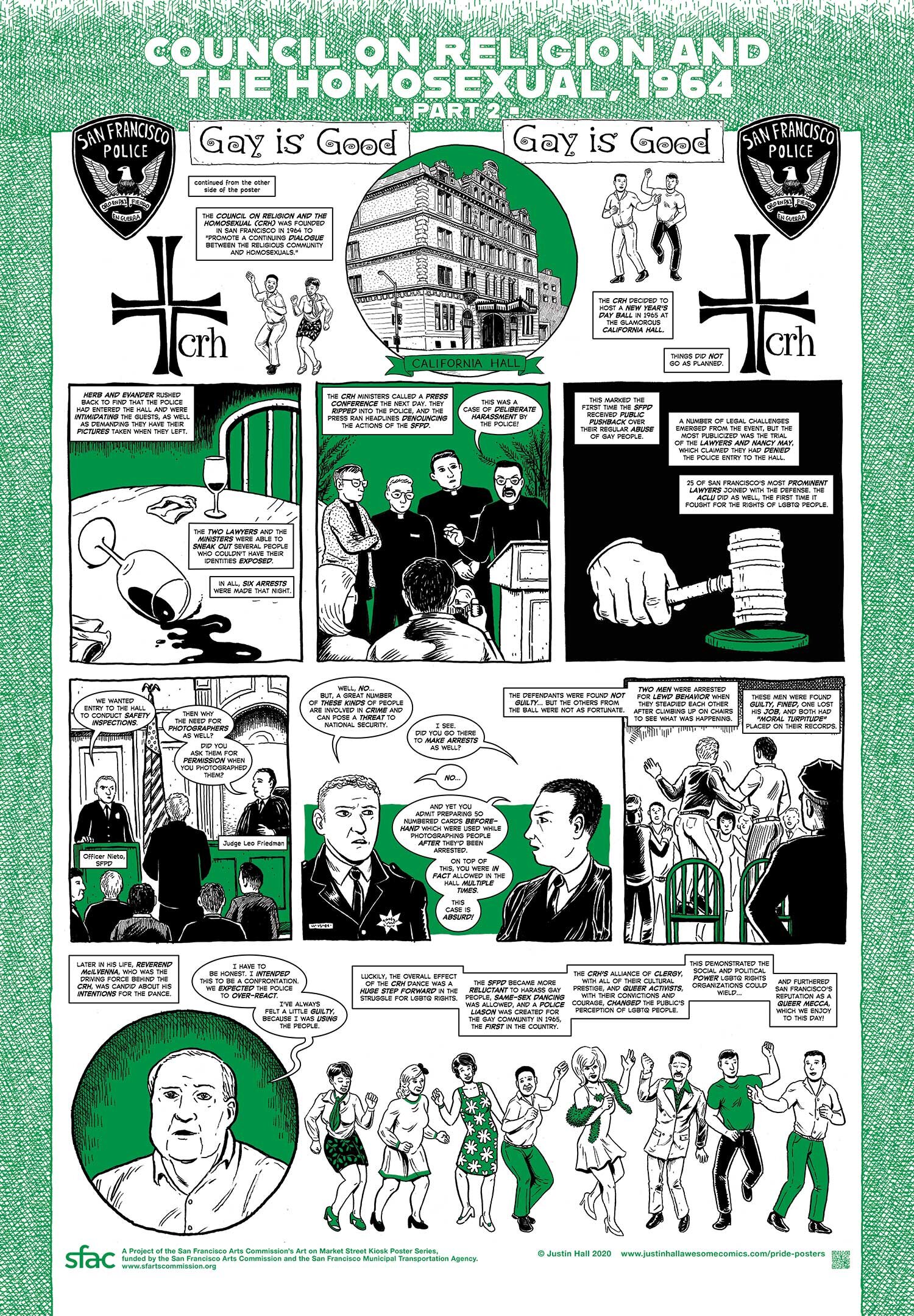Council on Religion and The Homosexual, 1964
The fourth poster, in green to represent the fourth color on the rainbow flag, is entitled COUNCIL ON RELIGION AND THE HOMOSEXUAL, 1964. It illustrates the creation of the CRH and its disastrous 1965 New Year’s Day party. This event is often referred to as “San Francisco’s Stonewall” because of its importance as a watershed in LGBTQ civil-rights history.
I would call the Compton’s Cafeteria Riots our Stonewall, since Stonewall was also a riot. But the New Year’s Day party was undoubtedly a seminal moment in SF queer history and the greater struggle for LGBTQ civil rights. This story also functions as a lynchpin in the poster set: The Daughters of Bilitis and José Sarria’s Society for Individual Rights (SIR) were both involved, as was Glide Memorial Church, which played a role in the Compton’s Cafeteria Riots.
The events of the CRH New Year’s Day party were too complicated to depict in exhaustive detail and are streamlined in the poster. For instance, the poster leaves out another lawyer, Elliot Leighton, who was arrested that night along with Nancy May, while Evander Smith and Herb Donaldson (also not mentioned) were arrested separately from them.
The courtroom drama was also omitted from the poster. All the ministers and their wives, decked out in their Sunday best, showed up in court to witness the trial. And there was a wonderful moment when an officer who said that he had arrested Nancy May because he felt threatened by her was called up to stand next to her. The court erupted into laughter at seeing the man, who clocked in at over six feet, next to May, a smaller-than-average woman. I’d love to include all of this in the full graphic novel I’m hoping to create based on these posters.
The panel at the bottom left of the second side illustrates the moment when Reverend Ted McIlvenna acknowledged that he “intended this to be a confrontation,” since he expected that the police would “over-react” to the party, and that he was “using the people” to effect change.
He did this during an interview in the fascinating documentary short, Lewd & Lascivious 1965: Drag Queens, Ministers, and the SFPD, directed by Jallen Rix. McIlvenna, protected by all of his privilege as a straight minister, put the safety of hundreds of queer people at risk in order to force movement on the issue of LGBTQ rights. And even though sacrifices were made through arrests and even the loss of jobs, in the end it worked.
This was the first moment in the US that public opinion turned against a police force harassing, oppressing, and brutalizing LGBTQ people with impunity. It was the first time the ACLU came to the defense of queer people, and one could argue that this was the moment when queer rights began in a significant way to be recognized as human rights in the US. Queer people were humanized for the general public to an unprecedented degree, and much of that was because of Reverend McIlvenna’s problematic gambling with the welfare of marginalized people.
An invaluable resource for this history is the wonderful interactive digital exhibition created by the Council on Religion and the Homosexual and hosted by the LGBTQ Religious Archives Network. I also highly recommend the “Making Gay History: The Podcast” episode about Evander Smith and Herb Donaldson, with Eric Marcus interviewing the two about the CRH 1965 New Year’s Day Ball.



